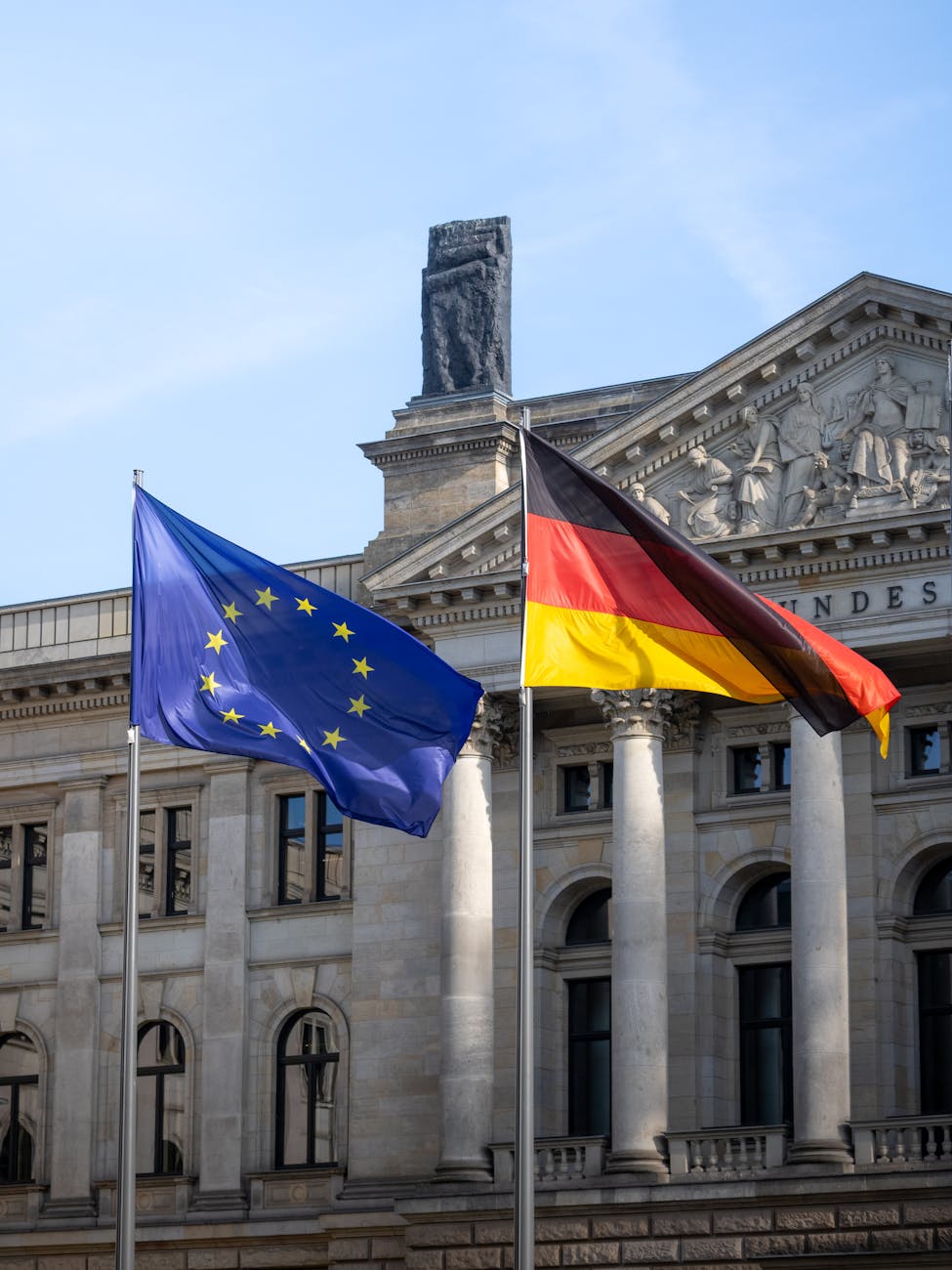The Ghost of the Macintosh: Reimagining Apple’s Lost Futures
A look back at pivotal moments that could have fundamentally altered the trajectory of personal computing, and what they tell us about innovation, risk, and the nature of what “could have been.”
In the often-told narrative of technological triumph, Apple’s Macintosh stands as a beacon of user-friendly design and groundbreaking innovation. Yet, as with any complex history, there are moments where the path diverged, where different choices might have led to vastly different futures. The story of “What Could Have Been” is not just a hypothetical exercise; it’s an exploration of the forces that shape technological evolution, the courage required for true leaps forward, and the enduring power of a compelling vision. This article delves into those critical junctures in Apple’s past, examining the alternative paths that were considered and the profound implications they held for the personal computer industry and beyond.
While the Macintosh we know and love is a testament to a specific set of design philosophies, the internal deliberations at Apple, particularly in its nascent years, reveal a landscape teeming with competing ideas. These weren’t minor tweaks; they were fundamentally different approaches to what a personal computer should be, how it should operate, and who it should serve. Understanding these “ghosts” of Apple’s past is crucial for appreciating the brilliance of the eventual Macintosh, but also for grasping the sheer magnitude of the risks taken and the alternatives that remained tantalizingly out of reach.
Context & Background: The Dawn of a New Era
The late 1970s and early 1980s were a period of explosive growth and fervent experimentation in the burgeoning personal computer market. Companies like IBM, Commodore, and Tandy were vying for dominance, each with their own vision of the personal computer. Apple, having already tasted success with the Apple II, was poised to make another significant mark. The development of the Macintosh was a direct response to the limitations perceived in existing systems, as well as a bold attempt to redefine the very nature of human-computer interaction.
The narrative of the Macintosh’s creation is often framed by the revolutionary graphical user interface (GUI) and the mouse. These were not invented by Apple, but their integration and refinement into a cohesive, user-friendly system were transformative. The seeds of these ideas were sown at Xerox PARC, where groundbreaking work was being done on concepts like the mouse, Ethernet networking, and the graphical user interface. Apple, through Steve Jobs’ famous visit to PARC, gained access to these nascent technologies, sparking a vision for a computer that was as intuitive as it was powerful.
However, the path from PARC’s research to the Macintosh shipped in 1984 was far from linear. Internal discussions within Apple were often heated, reflecting deep philosophical divides about the company’s direction. There were debates about the technical feasibility, the target market, the cost, and the fundamental user experience. The Macintosh project itself was a massive undertaking, fraught with technical challenges and intense pressure to deliver a product that could live up to the hype and secure Apple’s future.
One of the most significant forks in the road concerned the very architecture of the Macintosh. While the Lisa and later Macintosh were based on Motorola’s 68000 processor, there were explorations into other architectures, some of which could have led to very different hardware specifications and software capabilities. Furthermore, the philosophical approach to the GUI itself was debated. Should it be purely functional, or should it embrace a more playful, even artistic, aesthetic? These foundational decisions, made in the crucible of early development, would have far-reaching consequences.
The competitive landscape also played a crucial role. IBM’s entry into the personal computer market with the IBM PC in 1981 fundamentally shifted the industry. Its open architecture and reliance on off-the-shelf components allowed for rapid adoption and the creation of a vast ecosystem of software and hardware. This presented Apple with a dilemma: would they embrace a more open approach, or double down on their proprietary, integrated vision? The Macintosh, in many ways, represented the latter, a deliberate choice to prioritize a tightly controlled, cohesive user experience, even at the cost of broader compatibility and potentially lower initial adoption rates.
The history of Apple, especially during this period, is also inseparable from the personalities involved. Steve Jobs, with his relentless pursuit of perfection and his often-uncompromising vision, was a driving force. Steve Wozniak, the technical genius behind the Apple II, had a different, perhaps more pragmatic, approach to engineering. The interplay between these figures, and the broader engineering teams, shaped the decisions that were made. Understanding this context is key to appreciating why certain paths were taken, and why others, though perhaps viable, were ultimately abandoned.
In-Depth Analysis: Unpacking the Divergent Paths
The essence of “What Could Have Been” in the context of the Macintosh lies in the critical decisions made during its development that steered it away from other equally plausible, and in some cases, arguably more pragmatic, trajectories. These weren’t just minor adjustments; they were fundamental choices about technology, design philosophy, and market positioning.
The “Mini-Mac” vs. the Full-Featured Macintosh
One of the most significant “what ifs” revolves around the internal debates about the scope and ambition of the Macintosh project. While the ultimate Macintosh was a sophisticated machine, there were strong internal voices advocating for a significantly less expensive, more stripped-down version, often referred to as the “Mini-Mac” or a similar moniker. This alternative vision prioritized affordability and accessibility, aiming to compete more directly with the burgeoning MS-DOS market by offering a Macintosh-like experience at a much lower price point.
The argument for a “Mini-Mac” was compelling: the high cost of the Lisa, Apple’s first commercial GUI computer, had limited its market appeal. Many believed that a more affordable machine with the revolutionary GUI would democratize personal computing. Proponents of this approach suggested using less powerful processors, fewer features, and potentially a monochrome display to drastically reduce manufacturing costs. This would have allowed Apple to capture a larger share of the rapidly expanding home and small business markets.
Conversely, the eventual Macintosh team, led by figures like Jef Raskin and later Steve Jobs, was committed to delivering a premium, integrated experience. Their vision was not about incremental improvement but about a paradigm shift. They believed that the GUI, the mouse, and the overall user experience were so revolutionary that they justified a higher price point. They were focused on creating a machine that was not just functional but also elegant, intuitive, and inspiring. This led to decisions such as employing the more powerful Motorola 68000 processor, investing heavily in custom hardware and software integration, and maintaining a tight control over the entire ecosystem.
The decision to pursue the more ambitious, and expensive, Macintosh meant that for years, Apple’s flagship product was significantly out of reach for many consumers and small businesses, especially when compared to the rapidly commoditizing IBM PC and its clones. This strategic choice allowed the IBM PC platform to gain immense market traction and establish a de facto standard, which Apple would spend decades trying to overcome.
Alternative Architectures and Operating Systems
While the Macintosh eventually settled on the Motorola 68000 family of processors and a proprietary operating system built upon concepts from Xerox PARC, there were other technical avenues explored. Early in its development, Apple considered a variety of hardware architectures and operating system designs. Some of these explorations were less about the GUI and more about fundamental computing paradigms.
For instance, there were discussions about leveraging different processor architectures that might have offered different performance characteristics or cost advantages. The sheer novelty of the 68000 was a significant undertaking for Apple’s engineering teams, who were accustomed to the simpler architectures of the Apple II. Choosing a more mainstream, perhaps less cutting-edge, processor could have potentially smoothed the development process and reduced manufacturing costs, but it might also have sacrificed the graphical prowess that became synonymous with the Macintosh.
Similarly, the operating system’s development was a complex process. While the inspiration from Xerox PARC was undeniable, the implementation of what became the Macintosh Operating System (later Mac OS) was a monumental feat of software engineering. There were, no doubt, alternative OS designs that could have been pursued, perhaps with different underlying philosophies regarding memory management, multitasking, or even the structure of the GUI itself. The commitment to a tightly integrated hardware-software bundle meant that the OS was deeply intertwined with the specific capabilities of the Macintosh hardware, a departure from the more modular approach of the IBM PC.
Consider the implications of a more open architecture. Had Apple adopted a strategy similar to IBM’s, licensing its technology or allowing for third-party hardware development for the Macintosh platform, the competitive landscape might have been vastly different. This could have fostered a larger ecosystem of Macintosh-compatible hardware, potentially driving down costs and increasing adoption. However, it would also have diluted Apple’s control over the user experience, a factor that Jobs and others deemed crucial for the Macintosh’s success.
The Role of Networking and Connectivity
The early Macintosh was, by modern standards, a relatively isolated computing device. While it featured serial ports for printers and modems, its integration into nascent networking and the broader computing ecosystem was limited compared to systems designed with connectivity in mind from the outset.
The development of systems like the AppleTalk networking protocol and the Macintosh’s eventual connectivity options were crucial for its long-term viability, but the initial focus was on delivering the revolutionary desktop experience. Had Apple prioritized networking and interoperability more heavily from the very beginning, the Macintosh might have found a stronger foothold in business environments where connectivity was paramount. This could have involved earlier adoption of Ethernet, more robust support for networking protocols, and a greater emphasis on file sharing and communication capabilities.
The contrast with IBM’s PC ecosystem, which was rapidly embracing networking standards and a more open approach to interconnectivity, is stark. Apple’s decision to focus inward on the polished user experience, while ultimately rewarding in terms of design, perhaps came at the expense of early, widespread adoption in enterprise settings where inter-machine communication was a primary concern.
These decisions, made in the heat of innovation, highlight the inherent trade-offs in product development. The pursuit of a singular, perfect vision often means foregoing other potentially valuable paths. The “ghosts” of the Macintosh are not failures, but rather alternative futures that reveal the complex tapestry of choices that lead to the technology we have today.
In-Depth Analysis: The Price of Vision and the Road Not Taken
The narrative surrounding the Macintosh is often celebrated for its revolutionary impact. However, a deeper examination reveals that this revolutionary vision came with significant strategic trade-offs, choices that profoundly shaped Apple’s fortunes and the broader trajectory of the personal computer industry. By dissecting the core tenets of the Macintosh’s development, we can better understand the roads not taken and their potential consequences.
The High Cost of Innovation: Premium Pricing vs. Market Penetration
Perhaps the most defining strategic decision that shaped the Macintosh’s early trajectory was its pricing. The original Macintosh, launched at $2,495 (equivalent to roughly $7,000 today), was a significant investment. This was largely driven by the custom hardware, the advanced graphical user interface, and the premium components required to deliver the intended user experience. Apple’s leadership, particularly Steve Jobs, believed that the revolutionary nature of the Macintosh justified this premium price, positioning it as a professional tool rather than a mass-market consumer gadget.
This approach stood in stark contrast to the burgeoning market for IBM PC compatibles. These machines, often assembled from off-the-shelf components and utilizing a more open architecture, could be produced at much lower price points. This allowed companies like Compaq, Dell, and countless others to offer powerful computing solutions to a much wider audience. The IBM PC ecosystem rapidly became the de facto standard for business computing, driven by its affordability, expandability, and the vast software library that emerged.
The consequence of Apple’s premium pricing strategy was a slower initial adoption rate for the Macintosh. While it garnered critical acclaim for its ease of use and innovative interface, its market share remained significantly smaller than that of the IBM PC. This created a feedback loop: a smaller user base meant less demand for Macintosh-specific software, which in turn made the platform less attractive to businesses and consumers alike. Had Apple pursued a more aggressive pricing strategy, perhaps by compromising on some of the initial high-end features or developing a more cost-effective sibling product earlier (as discussed previously), it might have achieved a broader market penetration and challenged the dominance of the IBM PC more effectively.
The “what if” here is profound: could a more affordable Macintosh have democratized the GUI experience much sooner, potentially creating a different software ecosystem and a less bifurcated personal computing market? The decision to prioritize a singular, premium vision meant that Apple was never truly in direct competition on price with the PC clones, opting instead to carve out a niche for itself. This niche proved to be fertile ground for creative professionals and those who valued ease of use above all else, but it also limited Apple’s overall market influence for many years.
The inherent tension between delivering cutting-edge innovation and achieving mass-market affordability is a recurring theme in technology. Apple’s choice to lean heavily towards the former, while ultimately defining its brand identity, meant forfeiting the opportunity to capture the vast majority of the PC market in its formative years.
The “Closed” Ecosystem vs. Open Architecture: Control vs. Ubiquity
Another pivotal decision was the degree to which the Macintosh platform would remain “closed” versus embracing an “open” architecture. The Macintosh was designed from the ground up as an integrated system, where hardware, software, and peripherals were tightly controlled by Apple. This approach allowed for a highly optimized and consistent user experience, ensuring that the software ran smoothly and the hardware performed as intended. The famous “it just works” ethos was a direct result of this meticulous integration.
This stood in stark contrast to the IBM PC’s open architecture. IBM published the technical specifications of the PC, allowing third-party manufacturers to create compatible hardware, peripherals, and expansion cards. This fostered an explosion of innovation and choice. Developers could create software without needing direct approval from IBM, and hardware manufacturers could produce a wide range of complementary products, from graphics cards to sound cards to modems. This ecosystem effect was a major driver of the PC’s dominance.
Apple’s decision to maintain a closed ecosystem for the Macintosh was intentional. It allowed them to control the quality and user experience, ensuring that the revolutionary GUI was presented in the best possible light. It also protected their intellectual property and maintained a strong brand identity. However, it also meant that the Macintosh platform was less adaptable and expandable for users who wanted to customize or upgrade their machines with third-party components. It limited the diversity of hardware options and potentially slowed the development of specialized peripherals that could have broadened the Macintosh’s appeal in different markets.
The “what if” here is significant: what if Apple had adopted a more open approach? Could they have fostered a more robust third-party hardware market for the Macintosh, similar to what existed for the Apple II or the IBM PC? This might have led to cheaper peripherals, more specialized add-ons, and a faster pace of hardware innovation driven by external competition. It could have also made the Macintosh more attractive to businesses and hobbyists who valued customization and extensibility. However, such an approach would likely have come at the cost of the tightly controlled, polished user experience that Apple prioritized.
The choice between control and ubiquity is a fundamental dilemma in technology product development. Apple chose control, which defined its brand and user experience, but it also meant forgoing the potential for the rapid, widespread adoption that an open ecosystem could have facilitated. This strategic divergence allowed the IBM PC platform to establish itself as the industry standard, a position Apple would spend decades trying to challenge.
The Influence of Xerox PARC and the GUI Revolution: Different Interpretations?
The influence of Xerox PARC on the Macintosh’s graphical user interface is well-documented. However, the way Apple interpreted and implemented these ideas is also a point of divergence. Xerox PARC’s Alto computer, for example, was a groundbreaking research project, but it was never intended for mass commercialization. It was an expensive, experimental machine used primarily within Xerox.
Apple took the core concepts of the GUI, the mouse, and object-oriented programming and translated them into a commercial product. However, even within Apple, there were differing philosophies on how to best leverage these innovations. Jef Raskin, an early advocate for the Macintosh project, envisioned a computer that was even more accessible and focused on everyday tasks, with a less graphically intensive interface than what ultimately emerged. His early vision for the Macintosh was famously dubbed “Bicycle” – a tool that amplified human capabilities.
Steve Jobs, on the other hand, was captivated by the elegance and potential of the full-fledged GUI demonstrated at PARC. He pushed for a visually rich and sophisticated interface, believing that this was the future of computing. This led to the development of the bitmapped graphics, windows, icons, menus, and pointers that defined the Macintosh experience. While undeniably influential, this approach also placed significant demands on the hardware, contributing to the higher cost and the need for dedicated graphics processing.
The “what if” here involves considering alternative interpretations of the PARC innovations. What if Apple had pursued a simpler, more text-based interface with GUI elements added as optional enhancements? Or what if they had focused on a GUI that was less demanding of hardware resources, allowing for a much cheaper machine? These possibilities, while perhaps less visually striking, could have led to a different market positioning and a faster adoption curve.
The Macintosh’s success was built on its ability to translate complex research into an accessible, albeit premium, product. The decisions made regarding the depth of the GUI, the underlying operating system principles, and the hardware specifications were all interconnected, each contributing to a specific vision of personal computing. By examining these choices, we gain a deeper appreciation for the compromises inherent in bringing revolutionary technology to market and the myriad of alternative histories that could have unfolded.
Pros and Cons: Evaluating the “What Ifs”
Examining the alternative paths the Macintosh could have taken reveals a complex interplay of benefits and drawbacks. Each decision point presented a unique set of trade-offs, and understanding these helps us appreciate the historical context and the enduring legacy of the Macintosh.
The Path of the “Mini-Mac” or More Affordable Macintosh
Pros:
- Increased Market Share: A lower price point would likely have led to significantly broader adoption, potentially challenging the IBM PC’s dominance earlier and more effectively.
- Faster Ecosystem Growth: A larger user base would have incentivized more software developers and hardware manufacturers to create Macintosh-specific products, accelerating the growth of its ecosystem.
- Democratization of GUI: The revolutionary graphical user interface could have become accessible to a wider range of consumers and businesses much sooner, setting a different standard for personal computing.
- Stronger Competitive Positioning: Apple could have competed more directly on price with the rapidly growing IBM PC clone market, potentially preventing some of the market fragmentation that occurred.
Cons:
- Compromised User Experience: To achieve a lower price, compromises would likely have been made on processing power, graphics capabilities, or build quality, potentially diluting the “Apple experience.”
- Reduced Profit Margins: Lower prices would have meant thinner profit margins per unit, potentially impacting Apple’s ability to fund future research and development.
- Brand Dilution: Shifting to a more budget-oriented market could have diluted Apple’s premium brand image, which was crucial for its identity.
- Technical Limitations: A less powerful machine might have struggled to deliver the full potential of the GUI, limiting the types of applications that could be developed and run effectively.
The Path of an Open Macintosh Architecture
Pros:
- Expanded Hardware Options: A more open architecture would have encouraged third-party hardware manufacturers to develop a wider range of peripherals and expansion cards, offering users more choice and customization.
- Faster Hardware Innovation: Competition among third-party hardware vendors could have driven innovation and reduced the cost of upgrades and add-ons.
- Increased Interoperability: A more open system might have been more easily integrated into existing enterprise networks and diverse computing environments.
- Potential for Lower Costs: Competition in hardware manufacturing could have driven down the overall cost of Macintosh systems and peripherals.
Cons:
- Loss of Control Over User Experience: Apple would have had less control over the quality and compatibility of third-party hardware, potentially leading to a less consistent or reliable user experience.
- Brand Dilution: A less controlled ecosystem might have weakened Apple’s brand identity and the premium perception of its products.
- Fragmentation of Software Support: Developers might have found it more challenging to ensure their software worked across a wide variety of configurations.
- Potential for Lower Profitability: Reduced control over the hardware ecosystem might have impacted Apple’s ability to capture value from hardware sales.
The Path of a Simpler GUI or Different Software Philosophy
Pros:
- Reduced Hardware Demands: A less graphically intensive GUI could have run on less powerful, and therefore less expensive, hardware.
- Faster Software Development: Simpler interfaces might have streamlined software development, leading to a richer and more diverse software library earlier on.
- Broader Accessibility: A less demanding system could have been more accessible to users with less powerful computers or those who preferred a more functional, less visually complex interface.
Cons:
- Less Visually Appealing: The iconic visual elegance of the Macintosh might have been sacrificed, potentially reducing its aesthetic appeal.
- Less Transformative Impact: A less radical departure from existing interfaces might have had a less profound impact on the broader computing landscape.
- Missed Opportunity for Differentiation: Apple’s unique GUI was a key differentiator; a simpler approach might have made it harder to stand out.
Ultimately, the Macintosh’s success, despite its premium pricing and closed ecosystem, stemmed from its unwavering commitment to a specific vision of user-friendliness and intuitive design. The “what ifs” are not necessarily indictments of the choices made, but rather explorations of the roads not taken and the different kinds of success or failure they might have entailed. Apple’s ability to define and execute its vision, even when it meant foregoing wider market share in the short term, is a testament to its unique brand of innovation.
Key Takeaways
- Vision vs. Pragmatism: The Macintosh’s development highlights the constant tension between pursuing a revolutionary vision (premium experience, high cost) and pragmatic market realities (affordability, mass adoption).
- The Power of Integration: Apple’s success was built on tightly integrating hardware and software, creating a cohesive and intuitive user experience that became its hallmark. This came at the cost of openness.
- Ecosystem Dynamics: The contrast between Apple’s closed ecosystem and the IBM PC’s open architecture demonstrates how different strategies for fostering third-party development and hardware compatibility can lead to vastly different market outcomes.
- The “It Just Works” Ethos: The pursuit of a seamless user experience, even with higher costs, resonated deeply with a significant segment of the market and established a key differentiator for Apple.
- Strategic Pricing as a Barrier and a Differentiator: The Macintosh’s premium pricing limited its initial market penetration but also reinforced its brand as a premium, high-quality product.
- The Influence of Research: Groundbreaking research from institutions like Xerox PARC can have transformative effects on technology, but successful commercialization requires significant interpretation, adaptation, and strategic decisions about implementation.
- The Enduring Allure of “What Could Have Been”: Exploring alternative historical paths helps us understand the complex factors that shape technological progress and the inherent trade-offs involved in innovation.
Future Outlook: Lessons from the Past for Today’s Innovations
The story of “What Could Have Been” for the Macintosh offers timeless lessons that remain profoundly relevant for today’s technological landscape. As new paradigms emerge—from artificial intelligence and virtual reality to quantum computing and advanced robotics—the same fundamental questions and trade-offs that Apple faced will inevitably reappear.
One of the most enduring lessons is the power of a clear, compelling vision. Apple’s commitment to a user-centric, integrated experience, even when met with skepticism and challenges, ultimately defined a generation of personal computing. For current and future innovators, the takeaway is to identify not just a technological advancement, but a genuine human need or desire that technology can fulfill, and to build a coherent product and ecosystem around that vision.
The debate between open and closed systems, premium pricing and mass affordability, continues to play out in various forms. Companies like Google, with its Android operating system (largely open-source) and its diverse hardware partners, represent one end of the spectrum. Apple, with its tightly controlled iOS and hardware, exemplifies the other. The success of both models demonstrates that there is no single “right” answer, but rather that the optimal strategy depends on the specific market, the nature of the technology, and the company’s overarching goals.
Furthermore, the Macintosh’s journey underscores the importance of understanding the competitive landscape and making strategic decisions about differentiation. Apple didn’t try to out-IBM IBM; instead, it carved out a unique space by offering something fundamentally different and arguably better in terms of user experience. Today, as technologies converge and markets become saturated, finding that unique value proposition and defending it fiercely remains critical.
The concept of “just works”—the idea that technology should be intuitive and reliable without requiring extensive technical knowledge—is now an expectation, not a luxury. The Macintosh was instrumental in establishing this expectation. Future innovations must continue to prioritize user experience and accessibility, ensuring that groundbreaking technologies are not confined to niche markets due to complexity.
Finally, the exploration of “what could have been” serves as a constant reminder that innovation is not a linear process. It involves experimentation, risk-taking, and the courage to pursue paths that may not be immediately obvious or universally embraced. The alternative futures of the Macintosh offer a valuable perspective, not to dwell on missed opportunities, but to learn from the decisions made and to inform the strategies that will shape the technologies of tomorrow.
Call to Action: Embracing the Spirit of “What Could Have Been”
The historical examination of the Macintosh’s alternative futures is more than an academic exercise; it’s an invitation to a more thoughtful and strategic approach to innovation. As consumers, developers, and business leaders, we can all draw inspiration from the critical junctures that shaped this iconic technology.
- For Innovators and Entrepreneurs: Reflect on your own visions. Are you prioritizing a revolutionary user experience that justifies a premium, or are you aiming for broad accessibility and market penetration? Consider the inherent trade-offs and clearly define your target audience and competitive strategy. Embrace the spirit of bold decision-making, but temper it with a pragmatic understanding of market dynamics.
- For Consumers: Appreciate the choices that have brought the technology you use today to life. Understand that the seamless experiences you often take for granted were the result of difficult decisions, significant investment, and a willingness to differentiate. By understanding the history, you can better evaluate the value propositions of new technologies.
- For Technologists and Engineers: Consider the broader implications of your design choices. How do decisions about architecture, openness, and user interface impact the accessibility, cost, and long-term evolution of a technology? Learn from the Macintosh’s commitment to integration, but also from the lessons offered by more open systems.
- For Business Leaders: Draw lessons from Apple’s strategic positioning. How can your organization create a unique value proposition that resonates with a specific market segment? Are you investing enough in user experience and product integration? Be prepared to make bold, potentially contrarian, decisions if they align with a long-term, compelling vision.
The past is a prologue, and the “what ifs” of the Macintosh serve as a powerful reminder that the future of technology is not predetermined. It is actively shaped by the choices we make today. By embracing the spirit of inquiry, understanding the power of vision, and learning from the complex trade-offs of innovation, we can strive to create the next generation of technology that is not only groundbreaking but also impactful and accessible.









